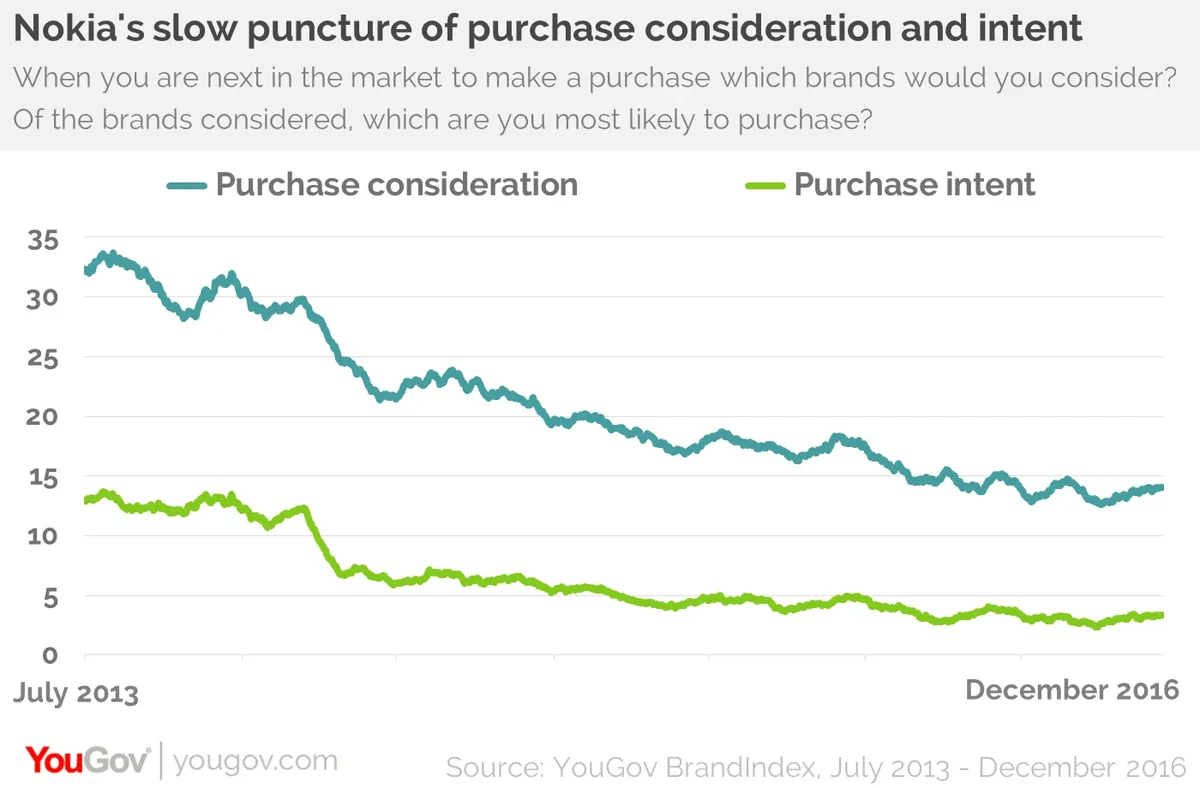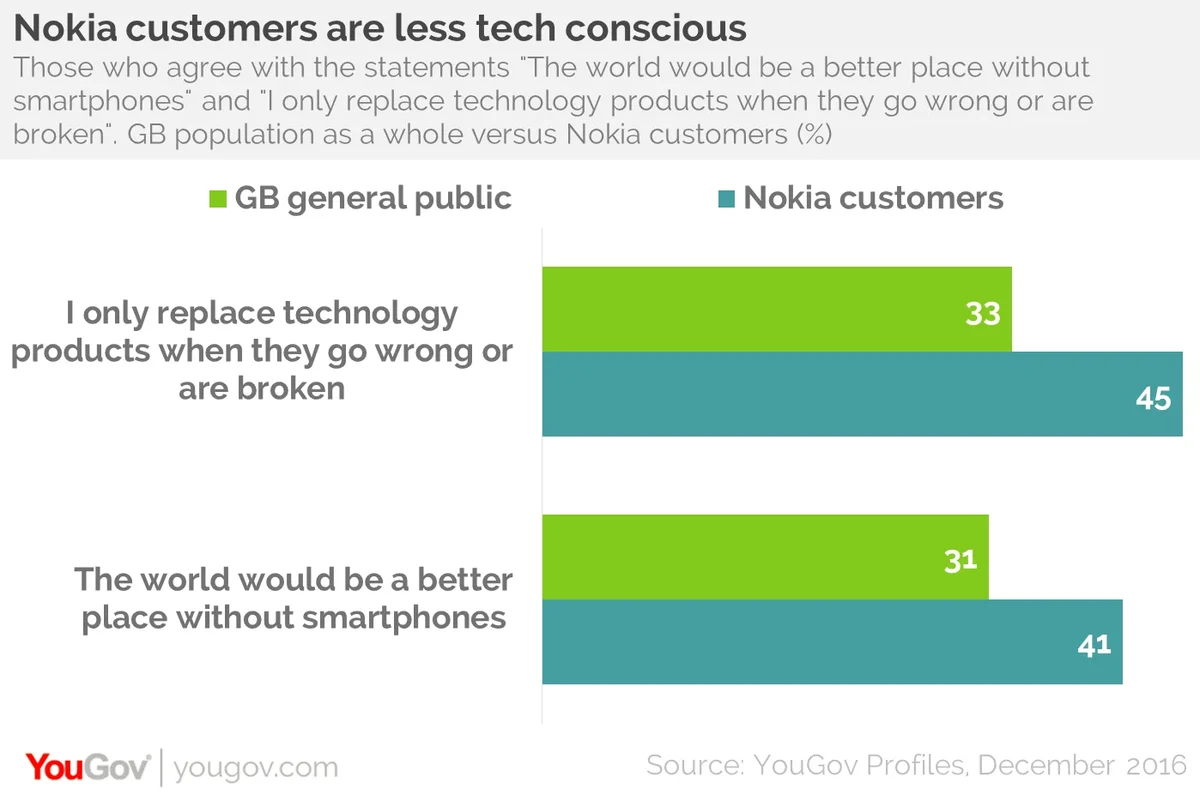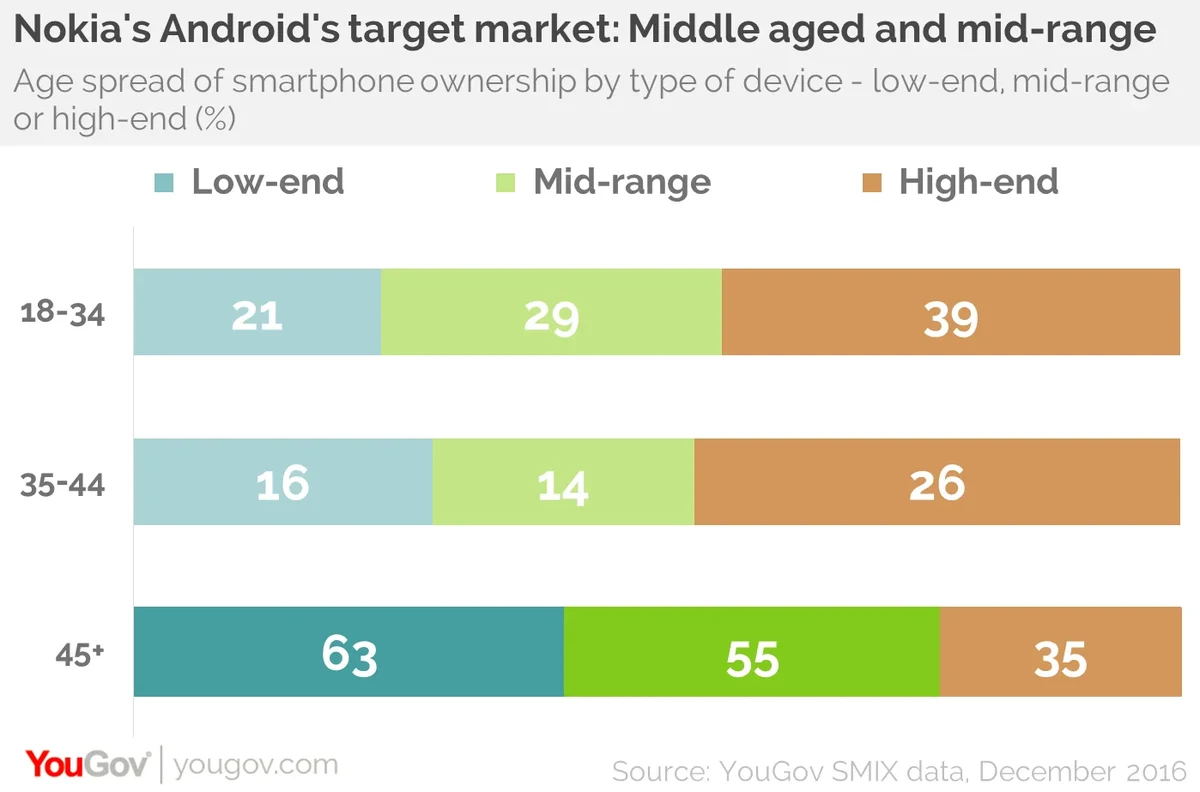For Nokia’s relaunch to succeed it needs to remodel its customer base as well as its phones
In recent weeks Nokia has started showing its hand and outlining what it plans to do next. The former mobile giant has revealed plans for a new range of feature phones and strong rumours are appearing that point to it going to market with a new range of Android-operated smartphones.
Six years ago, 32% of consumers had a Nokia – this comprised both feature phones and the nascent smartphone market. Now, just 11% have one (or a Lumia or Microsoft handset), compared to around three in ten that have a Samsung or an Apple.
As a consequence, Nokia’s purchase consideration and purchase intent have gone through the floor in recent times as the market became increasingly dominated by smartphones. Of course, part of this is down to Nokia being bought in 2013, and the phones were subsequently rebranded as either “Microsoft” or “Lumia” devices.

There are many reasons for this. Some are pull factors – consumers actively wanting other brands’ devices as they better fit their needs. Others are push factors – Nokia sticking with feature phones while others cornered the mobile market with smart devices; the succession of rebrands – from Nokia to Lumia to Windows – that left consumers confused; the insistence on the Windows operating system when the smartphone market was a binary battle between iOS and Android.
The brand will hope the relaunch in 2017 helps it regain a foothold in the market, but it will have its work cut out. In terms of combating the pull factors, it can do nothing to stop the march of other companies. However, it has its work cut out when addressing the things nominally within its own control.
To put it bluntly, in order to stem the flow and start to grow Nokia needs to change its customer base. However, in going after the Android smartphone market, it is in danger of alienating its core base of more tech-resistant consumers. But the opportunity comes from being able to provide a good mid-range Android alternative to LG, Sony and Samsung while playing on nostalgia for the brand.
This is where the dual approach to its relaunch – both feature phones and smartphones – makes sense. Comparing the make-up of Nokia’s customers against the British population as a whole, a few things are apparent.
Firstly, demographically, the brand skews towards older people and away from younger ones. 51% of Nokia customers are aged 55 and over compared to 36% of the British public as a whole. By comparison, just 4% of the brand’s customers are in the 18-24 age bracket and 8% are 25-34 years old, against 12% and 17% respectively of the population at large.

Nokia customers also noticeably care less about aspects of technology than the population as a whole. While two thirds of the general public state they would not be able to manage without the internet, this falls to just over half (52%) among Nokia customers. Where the cause and effect lies around feature phone ownership and not being fussed about internet access is unclear, but the fact remains that getting online matters less to Nokia customers.

This context helps explain the initial focus on new feature phone models, it also hints at the difficulty the brand will face growing its presence in the smartphone market. It is not just access to the internet that marks Nokia customers out – they are also generally less tech-conscious.
While a third (33%) of the British public say they only replace technology when it goes wrong or is broken, this figure rises to 45% among people with Nokias – indicating the uphill battle they will face in shifting its existing customer base on to newer models.
But the brand also has a problem when it comes to its device owners view smartphones specifically. While three in ten (31%) of the public at large think the world would be a better place without smartphones, this increases to four in ten (41%) of Nokia customers.

Following the collapse of Nokia’s market share, the brand obviously has to do something. Its dual approach of trying to maintain swathes of its existing customers with a new feature phone while trying to gain a beach head in the Android market is as good as any and better than most.
Given Nokia’s older customer base and the fact that over-45s are more likely to own a low-or-mid-range smartphone, growing its smartphone audience in this range with an Android aimed at Sony, LG and Samsung customers makes sense. This is especially true if it can play on consumer nostalgia for the brand among older consumers. However, it is unlikely there will be any quick fixes.

While a decent smartphone that rivals LG’s and mid-range Samsungs sends it in the right direction, the levels of customer loyalty among Apple and Samsung customers seem to place a block on the levels of domination it once enjoyed. But by catering to its present and its future with two separate devices it is taking a pragmatic approach that both holds what it has and start to take what it needs to grow.
Find out more about YouGov Profiles
Find out more about YouGov BrandIndex
Find out more about YouGov's Digital, Technology and Media research
Image from PA









